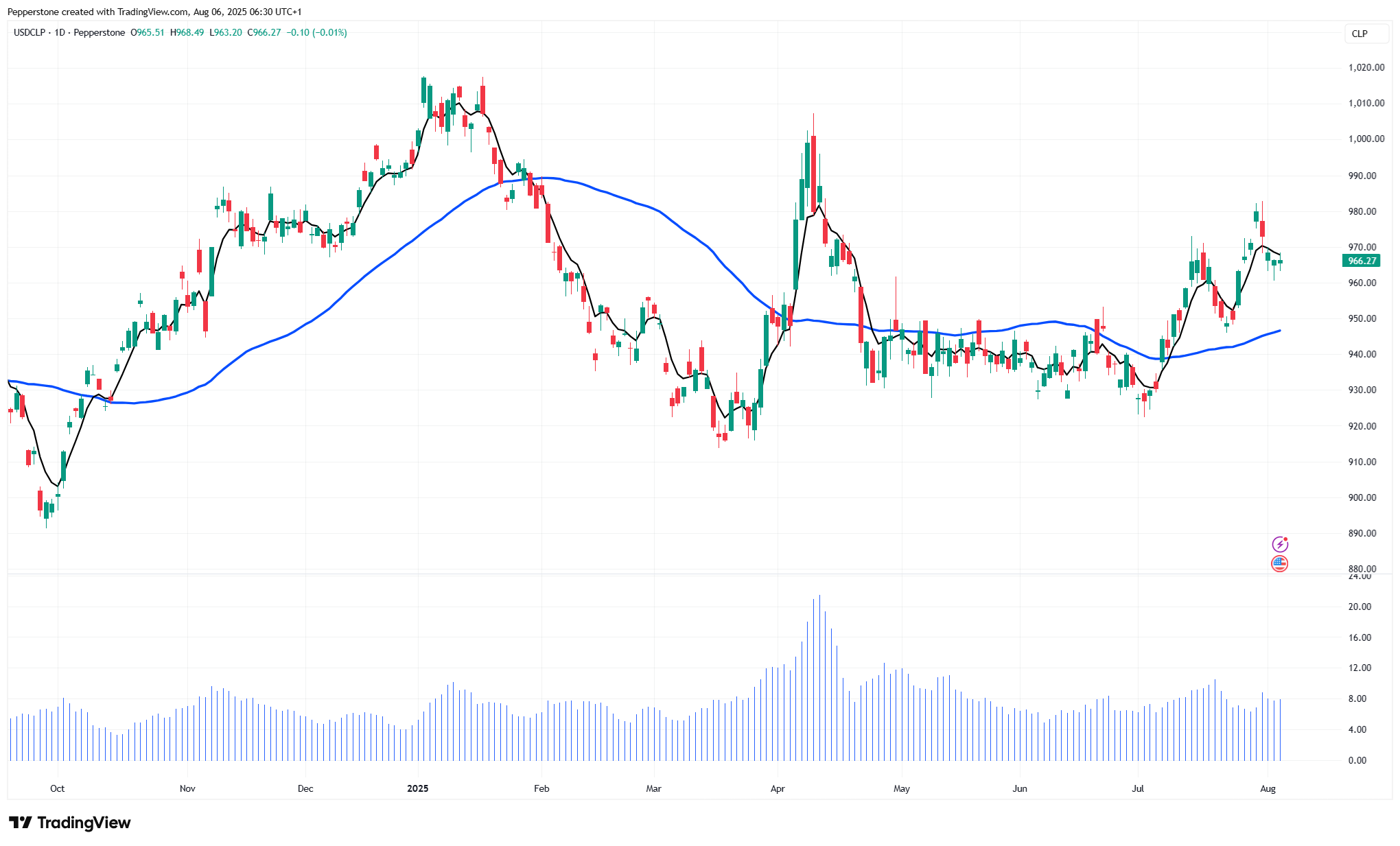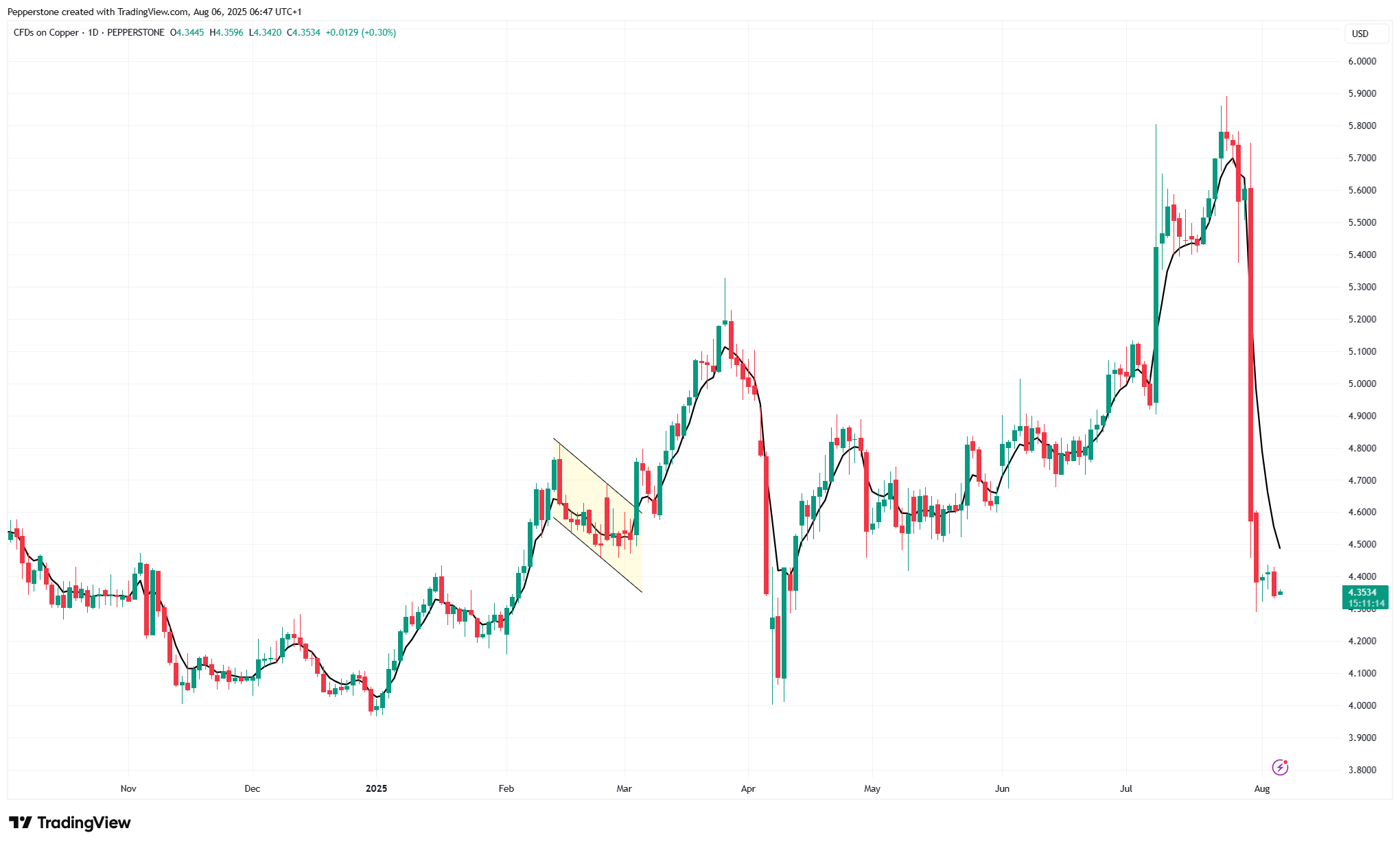- English
- 中文版
Trading USDCLP Amid BCCh’s FX Reserve Purchases, Copper Moves & Rate Cuts

Low volatility seen in USDCLP – but is that about to change?
USDCLP traders have recently had to navigate a period of low volatility, both in terms of the daily close-to-close percentage changes and the average daily high-to-low trading ranges. This period of low volatility has allowed traders on the higher timeframes to run tighter stops and offset this with an increased position sizing.
However, as the volatility in USDCLP evolves, traders need to be dynamic to the changes in the trading environment and factor that into their approach to managing risk. And that change could well be upon us, with new news that suggests that the trading environment for USDCLP could change markedly in the short term.
The BCCh’s new reserve accumulation program – where will that take USDCLP?
One such factor that could trigger a higher volatility regime and increased range expansion in the CLP is today’s announcement that Chile’s central bank (the BCCh) is set to roll out a new international reserve accumulation program. Starting on 8 August and set to last for three years, the BCCh will purchase up to $25m a day in international currency, with the purpose of replenishing its international reserves and replacing foreign currency credit lines.
While the central bank has made it clear this action is not designed to directly impact domestic financial conditions or the exchange rate, the market will essentially see this announcement as providing a consistent supply of CLP to the market and a steady bid in the USD. Of course, $25m in daily purchases (of foreign currency, CLP selling) is a tiny when we contrast to the $7.5t in turnover seen in the global FX market – but over time it could provide a psychological impact and given the daily turnover for USDCLP is estimated to be between $900m to $4b a day, the targeted daily accumulation flow could amount to as much of 3% of the daily turnover in CLP – a small negative for the CLP, but a reason to believe CLP finds sellers in the near-term.

The fact that the BCCh made it clear that this action isn’t directly intended to weaken the CLP should limit the upside in USDCLP, but it does suggest we could feasibly see FX speculators front-running the new reserve program and buying USDCLP from the re-opening of trading.
As such, I look for the recent highs of 980 to come into play, perhaps even eyeing a move above 1000 and over time, possibly even towards the 12-month highs of 1019.
The BCCh set to cut interest rates to 4%
Adding to the upside potential in USDCLP is the market’s pricing of further rate cuts from the BCCh. Having unanimously decided to cut the policy rate to 4.75% in July, the Chile central bank have been firm that they aim to bring the policy rate out of its current restrictive policy setting and towards a neutral setting – ‘neutral’ being the equilibrium policy rate which is seen as neither stimulatory nor restrictive relative to inflation, growth and labour market dynamics.
The BCCh had previously suggested that they model neutral at 4%, which suggests a base case of three more 25bp cuts in this easing cycle.
Market pricing in CLP interest rate swaps sees a 25bp cut as the next meeting on 9 September as a lineball call, with CLP swaps traders ascribing a 42% probability of a 25bp cut at this meeting, with the incoming CPI data (due on 8 August and on 8 September) set to impact these expectations and by extension the USDCLP.
One could argue USDCLP would already be well above 1000 if it weren’t for the lack of conviction and attractions to hold long USD exposures. Consider that while the market is yet to be convinced of a rate cut from the BCCh in September, the US swaps market places a 92% probability that the Fed will ease rates in September.
The impact of copper on the CLP
Fundamentally, CLP traders have also closely monitored the incredible 25% decline in the CME copper price – at first blush, the extreme declines in the copper price appears to be a major headwind for the CLP, given the impact on Chile’s terms of trade, and it possibly has been a factor that drove USDCLP 5% higher through July.

However, it is also worth highlighting that the sell-off in copper has been partly offset by the fact that Chile’s copper exports are heavily skewed towards refined copper, which will not be subject to a US import tariff; subsequently, there should be no impact on the future demand from US copper buyers.
In summary
Today’s announcement that the BCCh will start a $25m a day reserve accumulation program is certainly not large, but it could be seen as yet another factor underpinning the USDCLP upside case, at a time when the Chile central bank has restarted its rate-cutting cycle, amid falling terms of trade. A higher USDCLP rate looks probable and perhaps offset by the limited attractiveness of owning USDs in the current backdrop. With USDCLP volatility looking set to rise, look at the trading set up – either in a technical, fundamental or tactical perspective for yourself and consider where you see the FX rate headed.
Good luck to all.
The material provided here has not been prepared in accordance with legal requirements designed to promote the independence of investment research and as such is considered to be a marketing communication. Whilst it is not subject to any prohibition on dealing ahead of the dissemination of investment research we will not seek to take any advantage before providing it to our clients.
Pepperstone doesn’t represent that the material provided here is accurate, current or complete, and therefore shouldn’t be relied upon as such. The information, whether from a third party or not, isn’t to be considered as a recommendation; or an offer to buy or sell; or the solicitation of an offer to buy or sell any security, financial product or instrument; or to participate in any particular trading strategy. It does not take into account readers’ financial situation or investment objectives. We advise any readers of this content to seek their own advice. Without the approval of Pepperstone, reproduction or redistribution of this information isn’t permitted.